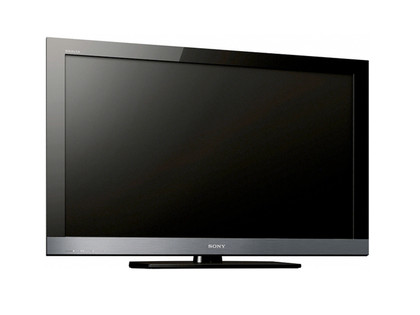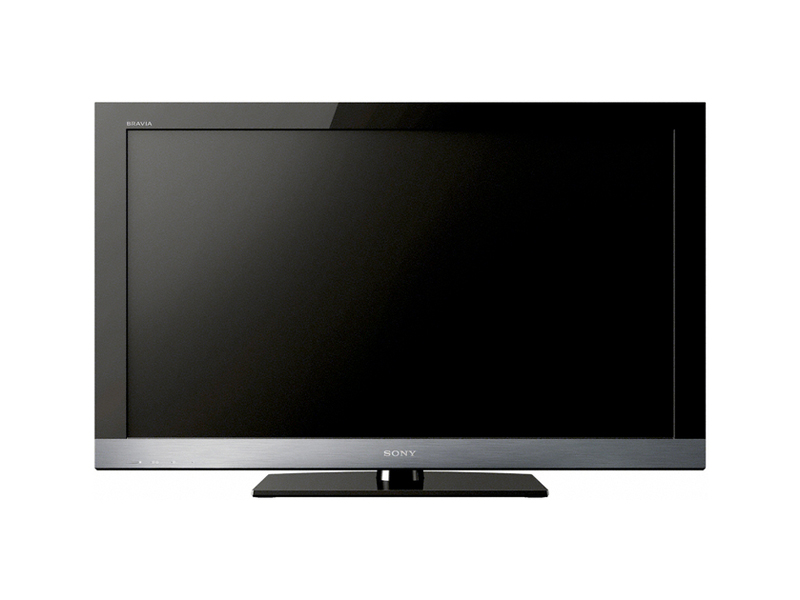Why you can trust TechRadar

Sony's KDL-32EX503 isn't lacking in top-drawer features. Most buyers will be after its integrated DVB-T2 tuner that makes Freeview HD channels a possibility; here BBC HD, ITV1 HD and 4HD (England)/S4C Cirlan (Wales) are supported by an eight-day electronic programme guide that squeezes in a thumbnail of the current live channel.
It may lack any kind of LED backlighting, but the KDL-32EX503's standard CCFL-lit LCD screen sports a full HD resolution. Behind that panel Sony's Bravia Engine 3 picture processing suite works its magic, which includes the trickery of MotionFlow 100Hz (to create a smoother, blur-free image) and a frame interpolation 'Film' mode (which ought to eradicate judder during Blu-ray movies).
Connections
Here's a TV that has high definition at its heart; on the rear are two HDMI inputs, which are joined by two more on a side panel to the left. On that same panel you'll find a composite video input alongside analogue stereo audio inputs, a headphones jack and a slot for a conditional access module (CAM).
That's crucial, given the likelihood that Sky Sports channels will soon be available via viewing cards from subscription services such as Top-Up TV. Our only complaint is that the side panel only hosts a single USB port.
Fine if you're planning to attach a USB memory stick or USB hard disk now and again to play digital files, but if you decide to spend £69 on a UWA-BR100 Wi-Fi dongle from Sony it will henceforth be permanently occupied. Besides, most serious flatscreen TVs now include two USB ports.
The rear panel is equally exhaustive, featuring a wired Ethernet LAN port near both video and audio inputs for a PC, a couple of RGB Scarts and a set of component video inputs. Outputs cover audio and include analogue stereo audio ins and outs and an optical digital audio port.
Compatibility
Both the USB and Ethernet LAN ports have much to do. Sony's latest Bravias handle digital files via USB far better than in previous years, though it's not exactly exhaustive; DivX, MPEG2 and AVCHD files can be played back.
Note the lack of a number of common file types such as WMV, though the biggest omission has to be DivX HD – such high-definition MKV video files are handled by an increasing number of flatscreen TVs.
Those same files are also available to play from a PC on the same broadband home network. This DLNA feature is powered by the Ethernet LAN port, which is also responsible for getting the KDL-32EX503 online.
And it's partly Bravia Internet Video that makes the KDL-32EX503 so likeable.
A huge improvement on 2009's woeful AppliCast content platform, the 2010 version includes some excellent widgets covering YouTube, Eurosport, Lovefilm (£9.99 subscription required), Lovefilm trailers (free), Five, Daily Motion and (presumably for this summer only) a FIFA portal that constitutes an impressively large archive of World Cup official films, shorts and compilations.
There are plenty of other widgets, such as Howcast.com, ON Networks, FordModels, GolfLink.com, Singing Fool and Livestrong.com, which seems to be the result of a deal with a US-based online publisher.
Current page: Sony Bravia KDL-32EX503: Features
Prev Page Sony Bravia KDL-32EX503: Overview Next Page Sony Bravia KDL-32EX503: Ease of useJamie is a freelance tech, travel and space journalist based in the UK. He’s been writing regularly for Techradar since it was launched in 2008 and also writes regularly for Forbes, The Telegraph, the South China Morning Post, Sky & Telescope and the Sky At Night magazine as well as other Future titles T3, Digital Camera World, All About Space and Space.com. He also edits two of his own websites, TravGear.com and WhenIsTheNextEclipse.com that reflect his obsession with travel gear and solar eclipse travel. He is the author of A Stargazing Program For Beginners (Springer, 2015),

